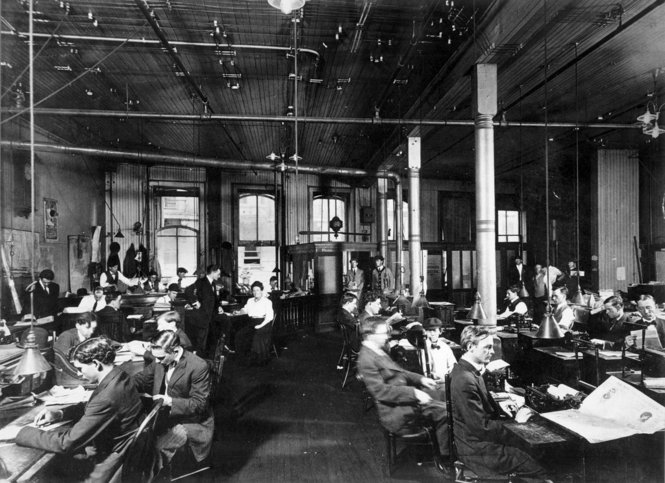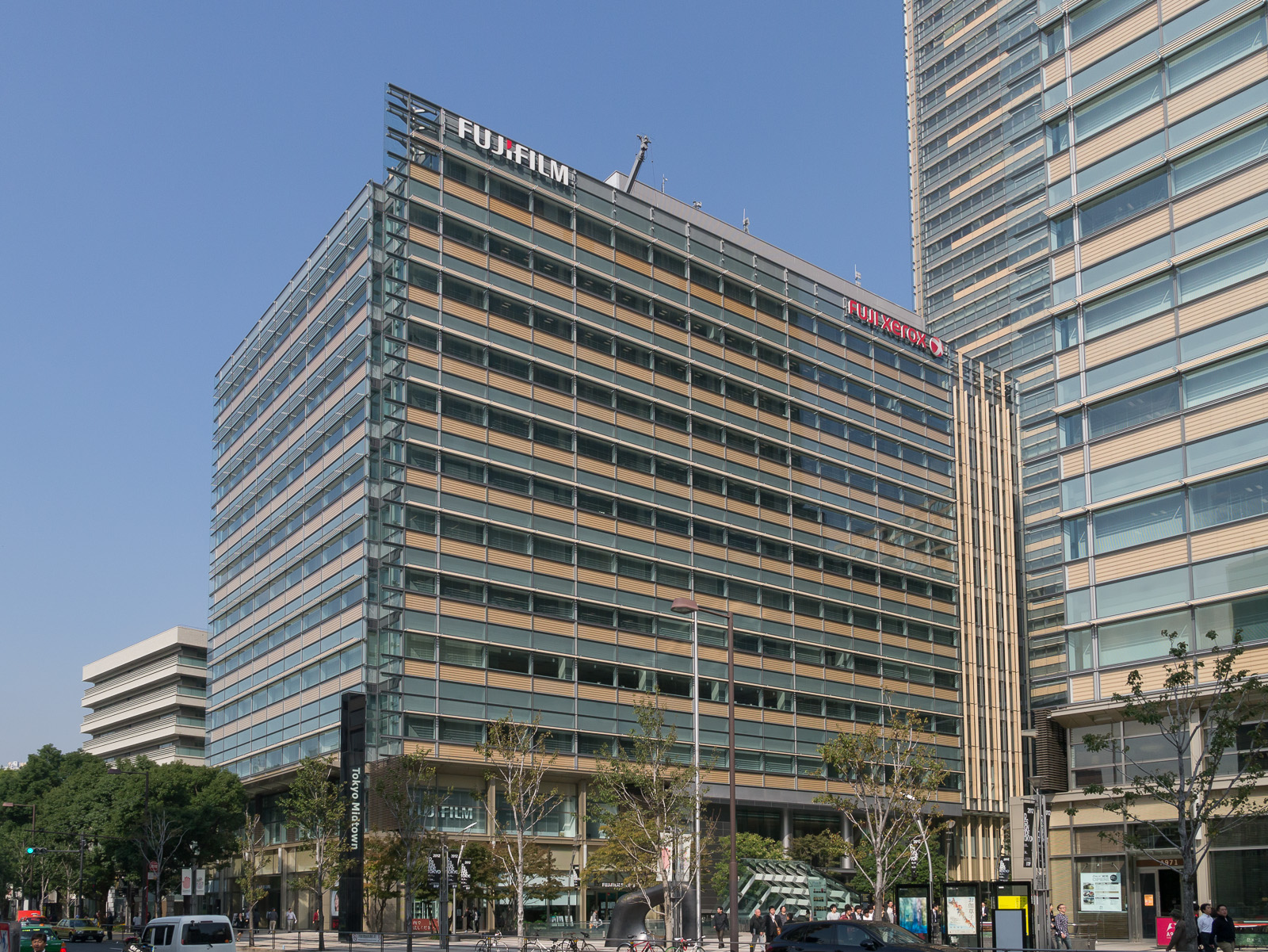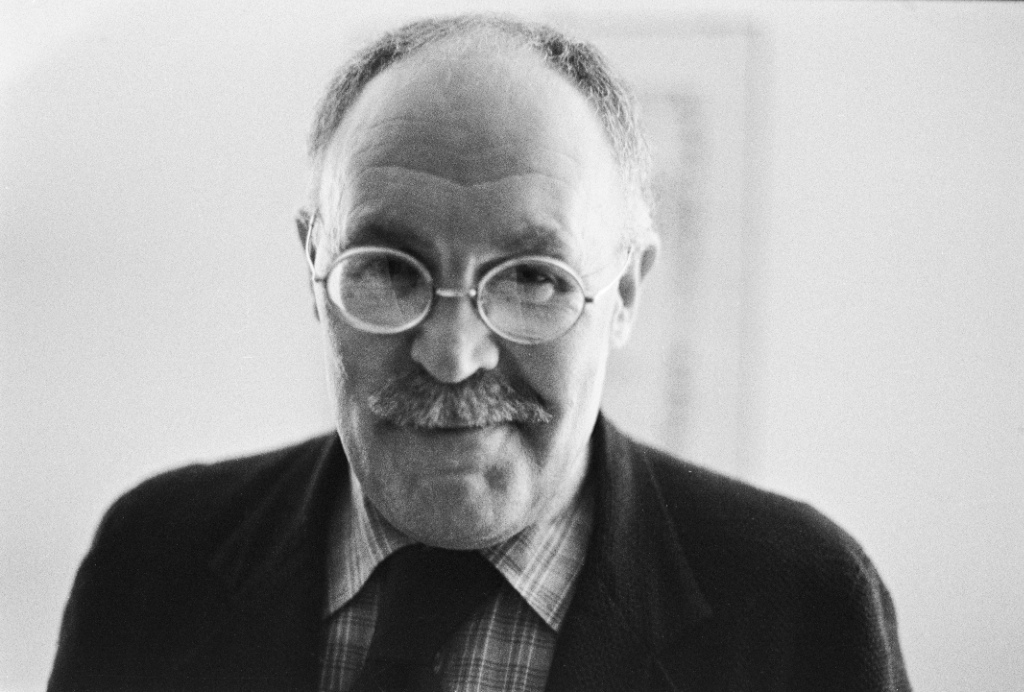|
Hakudō Kobayashi
Hakudō Kobayashi (小林はくどう, Kobayashi Hakudō; July 2, 1944) is a Tokyo-based artist working in video and sculpture. He is best known for his work as a promoter of citizen video work. Kobayashi is also Representative Director of the NPO Shimin ga Tsukuru TVF (Community-made TVF) which runs the annual Tokyo Video Festival. He taught at Seian University of Art and Design from 1992-2010. Biography Kobayashi was born Kobayashi Hiromichi (an alternate reading of the characters in his name) in Sendai City, Miyagi Prefecture, Japan in 1944. He moved to Tokyo to attend Tama Art University, graduating from the Department of Oil Painting under Yoshihige Saitō in 1967. In the leadup to Expo ‘70, Kobayashi worked with Goji Hamada, Kazuo Kawasumi, Masanobu Yoshimura, Yasuharu Yukino, and Tanaka Norio as the design firm Kantsū (Penetration), which produced the ABAB Akafudado store in Ueno, and a collaborative project at Expo ’70, among other projects. Kobayashi and Kan ... [...More Info...] [...Related Items...] OR: [Wikipedia] [Google] [Baidu] |
Tokyo
Tokyo (; ja, 東京, , ), officially the Tokyo Metropolis ( ja, 東京都, label=none, ), is the capital and largest city of Japan. Formerly known as Edo, its metropolitan area () is the most populous in the world, with an estimated 37.468 million residents ; the city proper has a population of 13.99 million people. Located at the head of Tokyo Bay, the prefecture forms part of the Kantō region on the central coast of Honshu, Japan's largest island. Tokyo serves as Japan's economic center and is the seat of both the Japanese government and the Emperor of Japan. Originally a fishing village named Edo, the city became politically prominent in 1603, when it became the seat of the Tokugawa shogunate. By the mid-18th century, Edo was one of the most populous cities in the world with a population of over one million people. Following the Meiji Restoration of 1868, the imperial capital in Kyoto was moved to Edo, which was renamed "Tokyo" (). Tokyo was devastate ... [...More Info...] [...Related Items...] OR: [Wikipedia] [Google] [Baidu] |
Robert Whitman
Robert Whitman (born 1935 in New York City) is an American artist best known for his seminal theater pieces of the early 1960s combining visual and sound images, actors, film, slides, and evocative props in environments of his own making. Since the late 1960s he has worked with new technologies, and his most recent work incorporates cellphones. Background Whitman studied literature at Rutgers University from 1953 to 1957 and art history at Columbia University in 1958. He is represented by The Pace Gallery in New York. Theater works He was a member of the group of visual artists - Allan Kaprow, Red Grooms, Jim Dine, and Claes Oldenburg - who in the early 1960s presented theater pieces on the Lower East Side in Manhattan. Whitman has presented more than 40 theater pieces in the United States and abroad, including ''American Moon'', ''E.G. and Mouth'' at the Rueben Gallery. ''Night Time Sky'' was his contribution to the First New York Theater Rally in New York in 1965; ''Prune Flat' ... [...More Info...] [...Related Items...] OR: [Wikipedia] [Google] [Baidu] |
Nagatachō
is a district of Tokyo, Japan, located in Chiyoda Ward. It is the location of the Diet of Japan and the Prime Minister's residence (Kantei). The Supreme Court of Japan is located in neighboring Hayabusachō. Nagatachō is often used to refer to the elected Japanese government, while Kasumigaseki refers to the unelected bureaucratic administration. During the Edo period, the area surrounding Hibiya High School and Embassy of Mexico was samurai residences of Kishiwada Domain. Companies based in Nagatachō NTT DoCoMo has its headquarters in the Sanno Park Tower in Nagatachō. The Swiss House, the Japanese offices of Swiss International Air Lines, are located in the Sanno Park Tower Annex.Sanno Park Tower . |
Video Hiroba
Video Hiroba (Japanese: ビデオひろば, lit. Video Plaza or Public Square) was a Japanese video art Artist collective, collective founded as a result of the first Japanese Video Art symposium and exhibition, Video Communication/Do it Yourself Kit (February 1972), organized by Michael Goldberg, Fujiko Nakaya, Nakaya Fujiko, and Yamaguchi Katsuhiro. Members of Video Hiroba were interested in exploring the possibilities and production of video as a form of mutual communication technology in the public sphere. History Video Hiroba was formed in March 1972 by Japanese contemporary artists and experimental filmmakers, following the 11-day symposium Video Communication/Do it Yourself Kit at the Tokyo Sony Building (Tokyo), SONY Building. The symposium was helmed by the collective's founding members, Nakaya Fujiko and Michael Goldberg. They respectively presented on the self-reflexive and Documentary film, documentary capacity of video, which resulted in formal experimentations by part ... [...More Info...] [...Related Items...] OR: [Wikipedia] [Google] [Baidu] |
Toshio Matsumoto
(25 March 1932 – 12 April 2017) was a Japanese film director and video artist. Biography Matsumoto was born in Nagoya, Aichi Prefecture, Japan and graduated from Tokyo University in 1955. His first short was ''Ginrin'', which he made in 1955. His most famous film is '' Funeral Parade of Roses'' (''Bara no soretsu''). The film was loosely inspired by ''Oedipus Rex ''Oedipus Rex'', also known by its Greek title, ''Oedipus Tyrannus'' ( grc, Οἰδίπους Τύραννος, ), or ''Oedipus the King'', is an Athenian tragedy by Sophocles that was first performed around 429 BC. Originally, to the ancient Gr ...'', featuring a transvestite (portrayed by Peter) trying to move up in the world of Tokyo Hostess clubs. Matsumoto published many books of photography and was a professor and dean of Arts at the Kyoto University of Art and Design. There, he taught experimental filmmaker Takashi Ito. He was also president of the Japan Society of Image Arts and Sciences. In the ... [...More Info...] [...Related Items...] OR: [Wikipedia] [Google] [Baidu] |
Katsuhiro Yamaguchi
Katsuhiro Yamaguchi (山口勝弘, ''Yamaguchi Katsuhiro''; 22 April 1928—2 May 2018) was a Japanese artist and art theorist based in Tokyo and Yokohama. Through his collaborations, writings, and teaching, he promoted an interdisciplinary avant-garde in postwar Japan that served as the foundation for the emergence of Japanese media art in the early 1980s, a field in which he remained active until his death. He represented Japan at the 1968 Venice Biennale and the 1975 Bienal de São Paulo, and served as producer for the Mitsui Pavilion at Expo '70 in Osaka. Biography Katsuhiro Yamaguchi was born in Tokyo in 1928 to a lawyer's family. His father was an arts enthusiast, often taking Yamaguchi to museums. His family home in the Ōimachi district also featured an annex designed by and decorated with paintings by the modernist Japanese painter Seiji Tōgō, although it was severely damaged by bombing during the war. Art historian Toshiharu Omuka argues that the remaining photographs ... [...More Info...] [...Related Items...] OR: [Wikipedia] [Google] [Baidu] |
Newsroom
A newsroom is the central place where journalists—reporters, editors, and producers, associate producers, news anchors, news designers, photojournalists, videojournalists, associate editor, residence editor, visual text editor, Desk Head, stringers along with other staffers—work to gather news to be published in a newspaper, an online newspaper or magazine, or broadcast on radio, television, or cable. Some journalism organizations refer to the newsroom as the city room. Print publication newsrooms In a print publication's newsroom, reporters sit at desks, gather information, and write articles or stories, in the past on typewriters, in the 1970s sometimes on specialized terminals, then after the early 1980s on personal computers or workstations. These stories are submitted to editors, who usually sit together at one large desk, where the stories are reviewed and possibly rewritten. Reporters generally used the inverted pyramid method for writing their stories, although ... [...More Info...] [...Related Items...] OR: [Wikipedia] [Google] [Baidu] |
Ginza
Ginza ( ; ja, 銀座 ) is a district of Chūō, Tokyo, located south of Yaesu and Kyōbashi, west of Tsukiji, east of Yūrakuchō and Uchisaiwaichō, and north of Shinbashi. It is a popular upscale shopping area of Tokyo, with numerous internationally renowned department stores, boutiques, restaurants and coffeehouses located in its vicinity. It is considered to be one of the most expensive, elegant, and luxurious city districts in the world. Ginza was a part of the old Kyobashi ward of Tokyo City, which, together with Nihonbashi and Kanda, formed the core of Shitamachi, the original downtown center of Edo (Tokyo). History Ginza was built upon a former swamp that was filled in during the 16th century. The name Ginza comes after the establishment of a silver-coin mint established there in 1612, during the Edo period. After a devastating fire in 1872 burned down most of the area, the Meiji government designated the Ginza area as a "model of modernization." The governme ... [...More Info...] [...Related Items...] OR: [Wikipedia] [Google] [Baidu] |
Sony Building (Tokyo)
The Sony Building was designed by Japanese architect Yoshinobu Ashihara, and opened on April 29, 1966 in Tokyo's Ginza district ( Chūō-ku). It is located at the Sukiyabashi crossroads on Harumi-dori, and is accessible directly from the Ginza subway station via exit B9. The building is an example of Postmodern architecture. The main showroom section of the building is split level floors up to the 6th floor, with each quarter of the showroom elevated from the previous by , creating a continuous showroom space. Another unusual feature of this building is that it leaves a small square facing the intersection open, creating a performance/display space that the architect referred to as "Sony Square". A major renovation was made in 1992, with the exterior restored to its original condition. Exterior louvers and tiles were replaced, new entrance doors were installed, and the small square at the corner of the intersection was renovated. The original facade, a light display consisting ... [...More Info...] [...Related Items...] OR: [Wikipedia] [Google] [Baidu] |
Fuji Xerox
was a joint venture partnership between the Japanese photographic firm Fujifilm Holdings and the American document management company Xerox to develop, produce and sell xerographic and document-related products and services in the Asia-Pacific region. Its headquarters was in Midtown West in Akasaka, Minato, Tokyo. Fuji Xerox was the world's longest running joint venture between a Japanese and an American company. History Fuji Xerox was established in 1962 as a 50:50 partnership with Rank Xerox. Rank Xerox was absorbed into Xerox Corporation in 1997. Originally only a distributor of Rank Xerox products, Fuji Xerox later began to research and develop its own xerographic machines and other devices, beginning with the FX2200 photocopier in 1973. This machine was considered the world's smallest copier. The company was also responsible for the innovation and manufacture of many of the colour printing devices sold by Xerox Corporation. Its innovations include the world's first m ... [...More Info...] [...Related Items...] OR: [Wikipedia] [Google] [Baidu] |
Pontus Hultén
Karl Gunnar Vougt Pontus Hultén (21 June 1924 – 26 October 2006) was a Swedish art collector and museum director. Pontus Hultén is regarded as one of the most distinguished museum professionals of the twentieth century. He was the pioneering former head of the Museum of Modern Art in Stockholm and in the 1970s he was invited to participate in the creation of the Centre Georges Pompidou in Paris, where he was the first director of the Musée National d'Art Moderne (MNAM) in 1974–1981. Biography Pontus Hultén was born in Stockholm; he studied art history at Stockholm University and during the 1950s he was a curator at a small art gallery and also organized film screenings. In 1958, he curated the exhibition ''Constructivist Design'' at Galerie Lambert Weyl, Paris. Moderna Museet In 1960, Hultén was named head of the Moderna Museet, shaping the museum into a powerhouse of modern art. Under Hultén, the Moderna Museet was to be one of the most dynamic contemporary art inst ... [...More Info...] [...Related Items...] OR: [Wikipedia] [Google] [Baidu] |
Moderna Museet
Moderna Museet ("the Museum of Modern Art"), Stockholm, Sweden, is a state museum for modern and contemporary art located on the island of Skeppsholmen in central Stockholm, opened in 1958. In 2009, the museum opened a new branch in Malmö in the south of Sweden, Moderna Museet Malmö. History The museum was opened in 9May 1958. In 2009, the museum opened a new branch in the building previously known as Rooseum in Malmö. Directors * 1958–1973: Pontus Hultén * 1973–1977: Philip von Schantz * 1977–1979: Karin Lindegren * 1980–1989: Olle Granath * 1989–1995: Björn Springfeldt * 1996–2001: David Elliott * 2001–2010: Lars Nittve * 2010–2018: Daniel Birnbaum * 2018–2019: Ann-Sofi Noring (acting) * 2019–present: Gitte Ørskou Collection The museum houses Swedish and international modern and contemporary art, including pieces by Pablo Picasso and Salvador Dalí and a model of the Tatlin's Tower. The museum's collection includes also key works by arti ... [...More Info...] [...Related Items...] OR: [Wikipedia] [Google] [Baidu] |







.jpg)